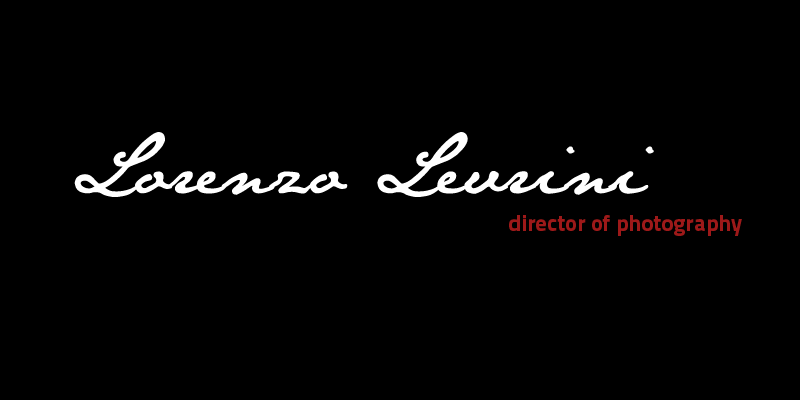In this short piece, I
will propose that ‘rules’ in cinematography can be thought of as a vertical ‘stacking’,
in which every rule represents an easy way to follow the rule under it, and in
which we move from the theoretical to the practical as we move up, but also
forget about possible alternative ways of fulfilling the rules below. If this
is a valid way of thinking about the topic, then it is important that we keep
this ‘stack’ in mind instead of just following whatever rule tops it off. In a
phrase, always look behind the rule – or rather, look UNDER the rule!

To demonstrate this idea, I’ll take one of the most common
‘rules’ you are taught when you start out as a DP: Avoid full frontal lighting
– that is, don’t put the light right behind the camera.
Why do we normally avoid full frontal lighting? It gives no
shape to the face. We want some contrast in there, some variation in
brightness. But who’s to say the variation in brightness has to be across the
face and not within the wider frame? Given that the audience sees the whole
frame, what else can we do to give it some variation in brightness? We can
introduce contrast - a brightness difference - between the face and the
background as opposed to between the two sides of a face. How do we do that? By
bringing the source close to the subject so it falls off rapidly. If we’re on a
longer lens, by bringing the light down at a slight angle so it doesn’t hit the
portion of background in shot. That can look beautiful. And what use is your
‘no frontal lighting’ rule now?
The ‘Avoid full frontal lighting’ rule arose because it
introduces variation in brightness across the face, which is one of the easiest
ways to introduce contrast into the frame. So we’ve taken a rule – ‘There must
be some contrast in the frame’ – and created
a rule above it that gives us an easy way to fulfil it. But in the
following the rule above rather than the one below, we forget about other ways
of fulfilling the rule below – for example, using full frontal lighting with
fall-off to introduce an illuminance variation between the background and the
subject. After all, in moving ‘up’ the stack, we’re going from the theoretical
to the practical. It is easy to see why any practical solution is only one of a
number of possible approaches to a theoretical problem.
Let’s dig deeper. If the rule behind ‘no frontal lighting’
is ‘There must be some contrast in the frame’, then what’s the rule behind that? Why must we have some contrast in the
frame? At the basic level, no contrast difference, that is, the same foot-lambert
level coming from every bit of the frame, would yield an image with no
information. A real subject under completely even illumination will introduce
foot-lambert level variation through the different reflectances provided by its
texture, so although the same level of incident light strikes every part of the
subject, every bit of the subject will reflect a slightly different amount
towards the camera. So we have to
have (and will inevitably have) some contrast variation. Why do we want a
substantial amount of it? Because it guides the eye. It separates elements
within the frame.
So we’ve looked a level deeper, and we have: ‘We must
separate elements within the frame’. But again, in going from that to ‘There
must be some contrast in the frame’, we’ve forgotten about alternative ways to
separate elements within the frame: depth, focus, colour contrast. You can
compose wonderful frames lit flat but with colour contrast provided by the
elements within the frame, or light them flat but compose them in depth, using
geometry and/or focus, or have a colour contrast provided by the light rather
than by the elements within the frame.
I’m going to stop here, but I invite you to look deeper.
What’s the rule behind ‘We must separate elements within the frame’? Do we
always want to separate elements, or is that rule just the easiest way to
fulfil a deeper rule? Maybe we want the subject not to stand out. Maybe we
don’t want to guide the eye. Maybe we should all aim to get to the point where
we only use the full contrast range of the medium when it serves our purposes
to do so (see Darius Khondji’s incredible night work in Amour).
I’m going to wager that most cinematographers are going to
find this at the bottom of every rule stack: ‘Tell the story’. In a way, the
ideal cinematographer holds the ‘rule stack’ in his semi-conscious mind at all
times, so he is aware of the rules at the top but is always capable of starting
from the bottom in order to produce imagery that serves the story rather than
the rulebook.
L.
London, 1 April 2013

No comments:
Post a Comment